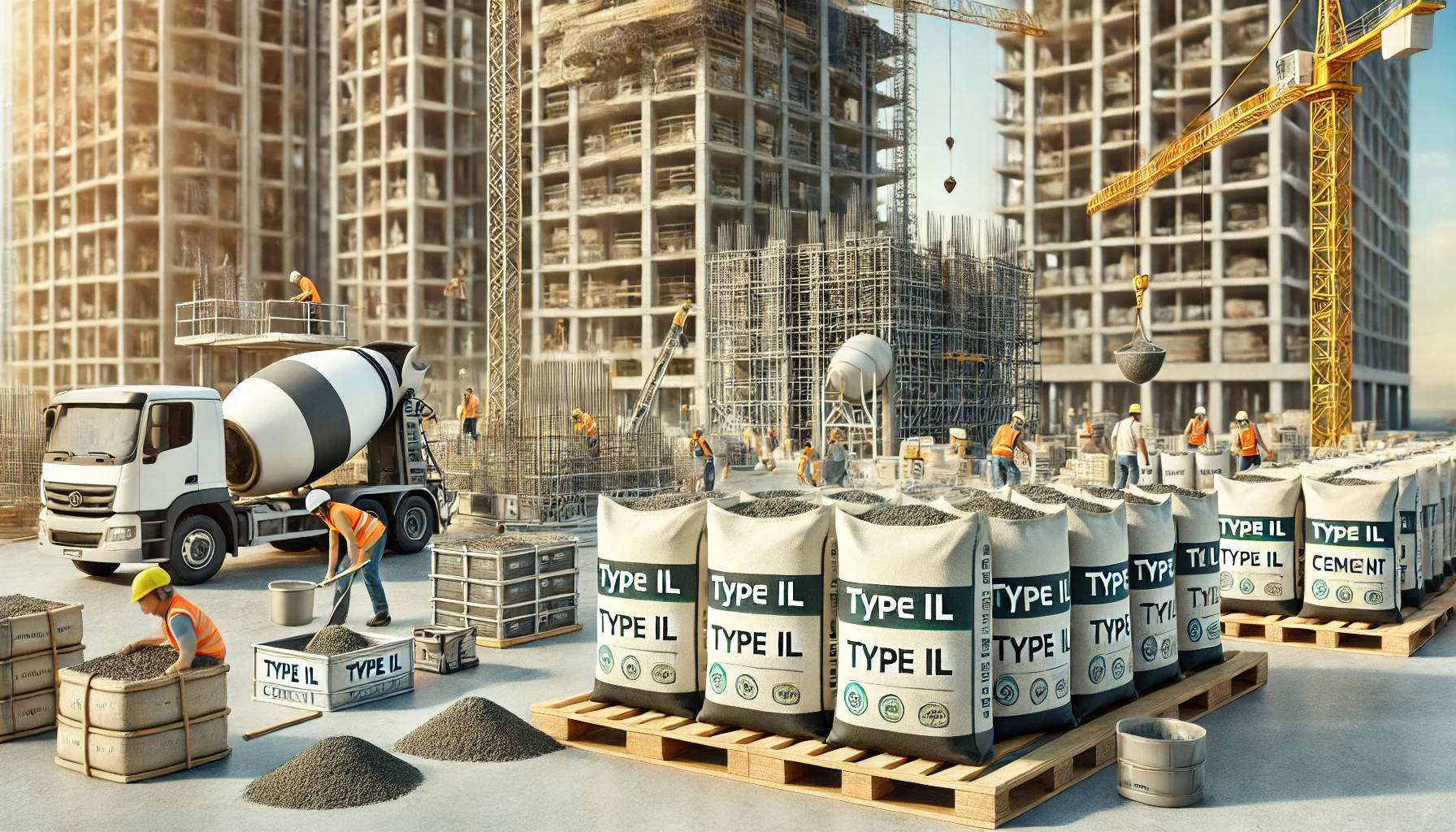Type IL cement exhibits improved resistance to chemical attacks compared to traditional Portland cement (Type I), primarily due to its composition and the incorporation of additional materials that enhance its durability in aggressive environments. The increased limestone content in Type IL cement contributes to a denser microstructure, reducing permeability and enhancing resistance to chemical ingress. For example, a study on hybrid alkali-activated cements demonstrated that reducing the basicity level and incorporating technogenic alumina silicates increased the material’s acid resistance, showing a corrosion resistance coefficient of up to 0.88 (Kovalchuk & Zozulynets, 2022). Additionally, research on the use of granulated blast-furnace slag in concrete revealed that it significantly improved acid resistance, with specimens showing reduced damage and lower weight loss after exposure to sulfuric acid compared to conventional binder compositions (Acta Polytechnica CTU Proceedings, 2022). Furthermore, studies have indicated that substituting portions of Portland cement with slag and other supplementary cementitious materials (SCMs) enhances resistance to sulfate attacks, as evidenced by reduced expansion and deterioration in mortar exposed to sulfate solutions (Yu et al., 2023). These characteristics make Type IL cement more suitable for use in harsh environments where chemical durability is crucial.
| Serial Number | Paper Title | Insight | Citation Count |
|---|---|---|---|
| 1 | Study of acid resistance of hybrid alkali activated normal hardening cements (Kovalchuk & Zozulynets, 2022) | Highlights the enhanced acid resistance of hybrid alkali-activated cements with reduced basicity and partial replacement with alumina silicates, showing significant improvements in corrosion resistance. | – |
| 2 | Optimizing the acid resistance of concrete with granulated blast-furnace slag (Acta Polytechnica CTU Proceedings, 2022) | Discusses how partial substitution of Portland cement with blast-furnace slag improves acid resistance, with concrete specimens showing reduced damage and weight loss after exposure to sulfuric acid. | – |
| 3 | Effect of Grouting on the Resistance of Portland and Blast Furnace Slag Cement Paste Against Chemical Attack by Aggressive Carbon Dioxide (Trautmann, 2023) | Investigates the resistance of grouted and neat cement paste samples against chemical attack by aggressive carbon dioxide, demonstrating improved resistance with lower porosity and higher inert aggregate content. | – |
| 4 | New perspective to improve the sulfate attack resistance of mortar by coral sand (Yu et al., 2023) | Shows that using coral sand in mortar significantly improves sulfate attack resistance, reducing expansion and maintaining mechanical properties even after prolonged exposure to sulfate solutions. | – |
| 5 | The Development of a New Chemically Resistant Sprayed Mixture (Figala et al., 2022) | Explores the development of a chemically resistant sprayed mixture based on Portland cement with special admixtures, showing enhanced resistance to sulfate and biogenic sulfuric acid attacks, suitable for sewer structures. | – |
